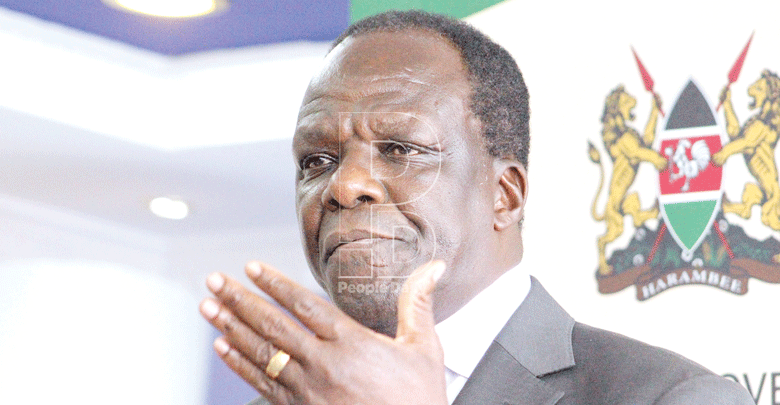How taxpayers lost billions in leased medical kits scheme
By Hillary Mageka, October 22, 2019Details have emerged of how the Ministry of Health officials may have colluded with five international firms to rip off the public through the controversial Sh63 billion Managed Equipment Service (MES) programme.
Documents tabled at the Senate last week reveal how officials inflated the cost of the equipment in what appears like a plot to siphon taxpayers’ money.
The MES scheme, which is a subject of investigation by a Senate ad hoc committee, was awarded in five slots for theatre equipment, theatre CSSD equipment, laboratory category I and 2, renal equipment, radiology equipment and ICU equipment.
Preliminary investigations show that among the items leased to 98 level five hospitals and four referral hospitals, as part of the theatre and ICU equipment, are consumable and disposable kits that ordinarily should have been procured by the counties or the Ministry of Health instead of leasing.
These include spot lights, drip stands, microwave ovens, dressing and general-purpose trolleys, instrument trolleys, washing basins, baby cots and electric kettles.
Others are syringe pumps, infusion stands, operating theatre lamps, theatre tables, resuscitators, linen trolleys, patient stretchers and resuscitation trolleys.
Huge scandal
The committee, chaired by Isiolo Senator Fatuma Dullo and deputised by Moses Wetang’ula (Bungoma), has described the deal as a huge scandal.
“Somebody or some people at the Ministry of Health connived to do business using counties as the conduit,” Wetang’ula said during a meeting with the Council of governors (COG) last week.
For instance, in the Nyeri Provincial General Hospital, 12 syringe pumps which would have cost Sh540,000 in a direct purchase, will cost Sh17 million in the leased programme for seven years.
Two operating theatre lamps which would have cost the Nyeri County government Sh240,000 in the market, in the MES scheme it will pay Sh9 million.
Theatre spotlight, whose market price is Sh5,700 for three pieces, costs Sh4.3 million in the MES scheme.
Patient trolley, which costs Sh26,680 per unit in the market, the taxpayer paid Sh1,447,630 per unit in the leased agreement, which is more than 54 times.
For the High Dependency Unit (HDU) beds, each county would have spent Sh600,000 for four units by buying them directly. In the MES project they paid Sh5.3 million.
In 2015, COG, under the leadership of then Bomet Governor Isaac Ruto, had estimated that if they were to directly purchase all the equipment leased, it would cost each county Sh181.6 million in the same period at the then-prevailing market rates for two hospitals.
The council claimed a six-year 7.5 per cent Value Service Contract would total Sh41.3 million for each county, bringing the overall cost of the equipment to Sh223 million over the seven years.
In the original scheme, at a cost of Sh38 billion, each county would have paid Sh665 million at the end of leasing period.
When he appeared before the committee, Health Cabinet Secretary Sicily Kariuki sought to explain the variations on the MES contract which resulted in an increase in payments by each county from Sh95 million to Sh200 million in the 2018/19 financial year.
Kariuki said the programme had been expanded to additional 21 hospitals at the value of Sh3.7 billion for five years, translating to annual payment of Sh740 million.
She said the expansion was necessitated by the need for specialised equipment in the identified hospitals to ensure access as the ministry implemented President Uhuru Kenyatta’s legacy programme Universal Health Care (UHC).
“All hospitals have since been equipped with the equipment and are offering service except ICU and renal for Meru Hospital,” she said.
While the COG agrees that the equipment has continued to be installed and commissioned from 2015 to date, some remain unused because of lack of personnel and electricity.
For instance, two theatre machines at the Iten County Referral Hospital, Digital X Ray machines at Marsabit Referral hospital and Anaesthetic Machine and Infant radiation machine in Emuhaya sub-county hospital have remained unused for the past five years.
The equipment
In Bungoma and Homa Bay counties, there are no radiologists in the X ray department to operate the equipment, while CT Scans and renal unit in Wajir have not not been operational for the past three months. Despite being delivered one year ago, CT scan at the Coast General Hospital is yet to be installed.
“Some of the equipment has remained unused due to lack of specialised personnel to operate them,” COG chair Wycliffe Oparanya told People Daily on Sunday.
Oparanya (pictured), said procurement of MES was not done in accordance with the needs of counties and most county governments were coerced by the national government into signing the MOUs.
The Kakamega governor said a well-choreographed campaign against his administration was carried out by national government officials.
“The signing of the MOUs was done under duress. The pressure was too much from all quarters. I had to do it,” he said.
According to him, a CT scan was delivered at a hospital, despite the county having purchased one already.
“During Madaraka Day celebrations last year, another CT scan was dumped at the hospital by unknown people. I was only informed it was installed and the President was ready to launch it,” he said.
He added: “I now have three CT scans that I don’t know what to do with them.”
Other counties found themselves in situation similar to Kakamega’s. For example, Turkana county procured a CT scan machine at Sh34 million yet it received another one under the MES project.
Embu county acquired five dialysis machines and a water treatment plant at Sh86 million but received addition five dialysis machines which it did not request for.
Nyeri County, which already had theatre equipment, received the same equipment under MES.
